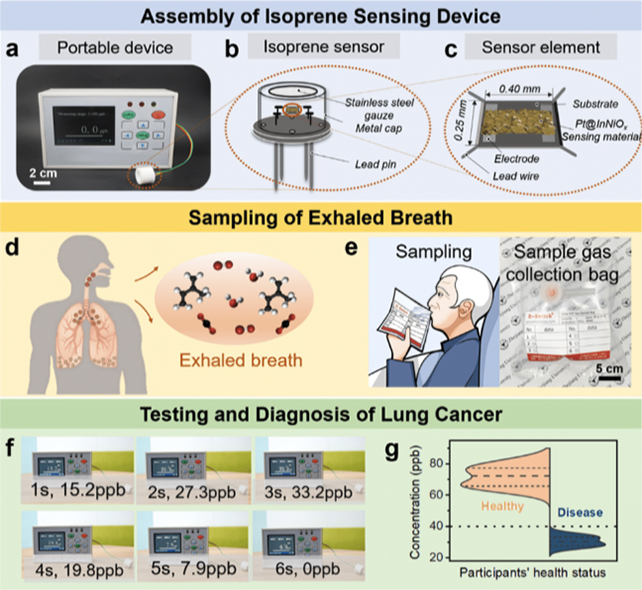Nov 13, 2024
Ultra-sensitive monitors may one day routinely have the ability to detect lung cancer on someone's breath.
A small-scale test using a prototype device has demonstrated it can accurately detect the difference between eight healthy individuals and five people with lung cancer.
The device, built by a team led by researchers from Zhejiang University in China, looks for the compound isoprene. Lower isoprene levels have been identified as a potential indicator of lung cancer, but it's a small shift that's very difficult to measure.
Now, we have the technology to do it – at least in a proof-of-concept form. As with most cancers, the earlier lung cancer is detected the better the chances of effectively treating it – and there's potential here for a simple, affordable, quick, and non-invasive way of checking for the disease.

"Our work not only provides a breakthrough in low-cost, non-invasive cancer screening through breath analysis but also advances the rational design of cutting-edge gas sensing materials," write the researchers in their published paper.
To achieve the required sensitivity in their breath monitor, the researchers used nanoflakes made from a combination of platinum, indium, nickel, and oxygen. As the isoprene hits the nanoflakes, electron release is sparked in a way that can be measured.
The end result was a sensor that could detect isoprene levels as low as 2 ppb (parts per billion) – a notable improvement on existing technology. Of the 13 people tested, the five with cancer had isoprene levels lower than 40 ppb on their breath, whereas in the healthy group of eight people the level was over 60 ppb.
Impressively, in lab tests the nanoflakes were shown to be able to identify isoprene specifically among other chemicals. They can also operate in conditions with higher humidity, which is essential for a breath monitor. However, even the researchers admit there's still a long way to go.
"Targeting the substantial market of lung cancer diagnosis, future commercialization of the technology requires continuous research on the sensing materials, the accurate relationship between breath isoprene and lung cancer, data analysis algorithms, and integration techniques with portable devices," write the researchers.
The damage done by lung cancer affects some of the body's key metabolic processes, and it's thought that those changes are somehow affecting isoprene in a way that can reveal the presence of the disease.
Lung cancer is the leading cause of cancer-related deaths worldwide – mostly due to smoking – and was responsible for some 1.8 million fatalities in 2020. It's also one of the cancers that is often detected at a late stage, when treatments are less effective, making studies of this type particularly urgent.
"Continuous research on the relationship between breath isoprene levels and lung cancer, as well as on the various influencing factors (e.g., age, health status), can help refine and further commercialize the technology," write the researchers.
The research has been published in ACS Sensors.
.png)